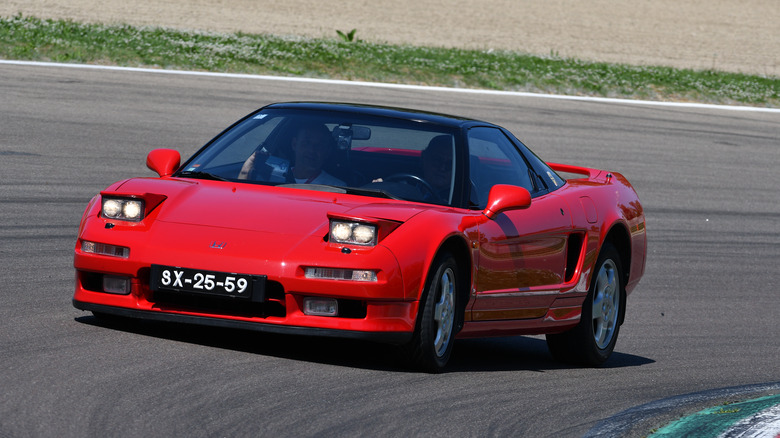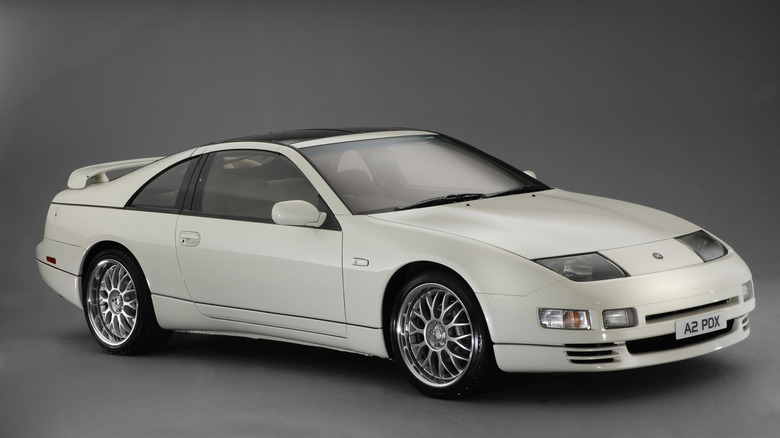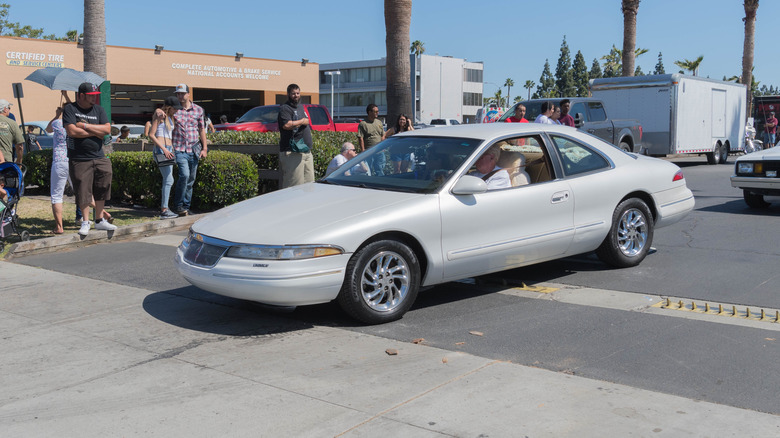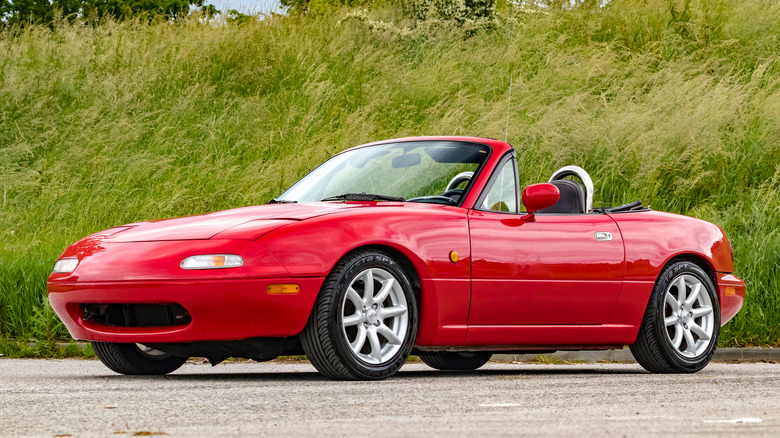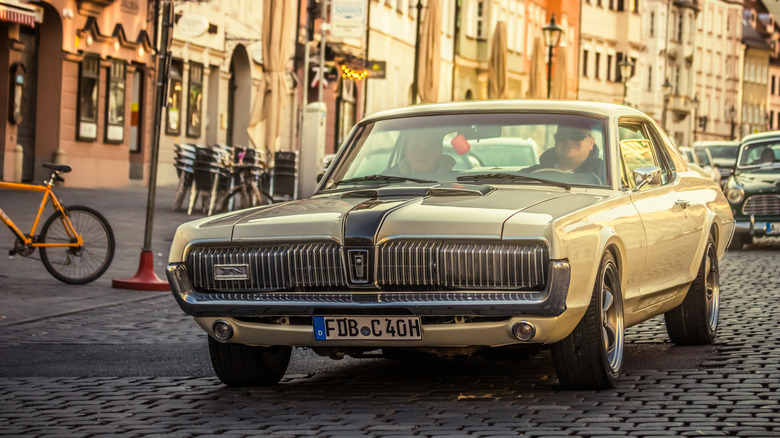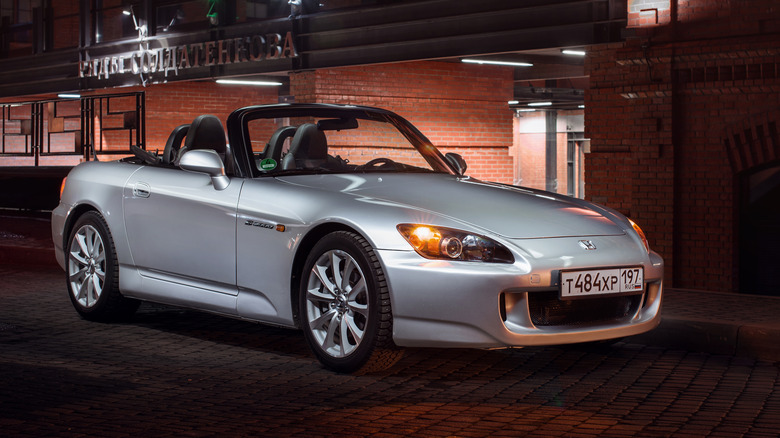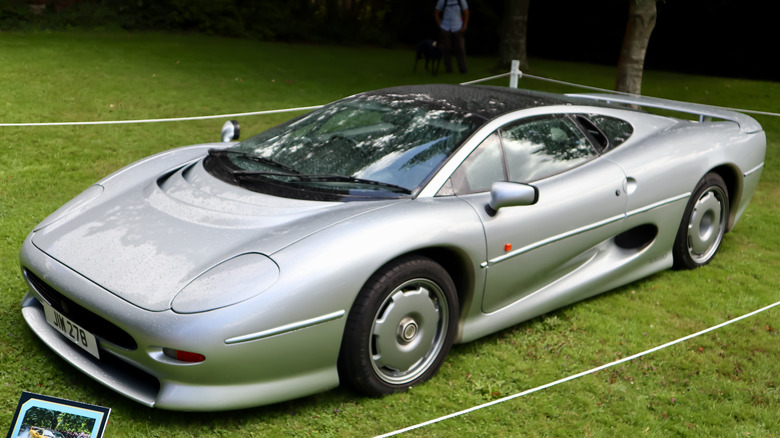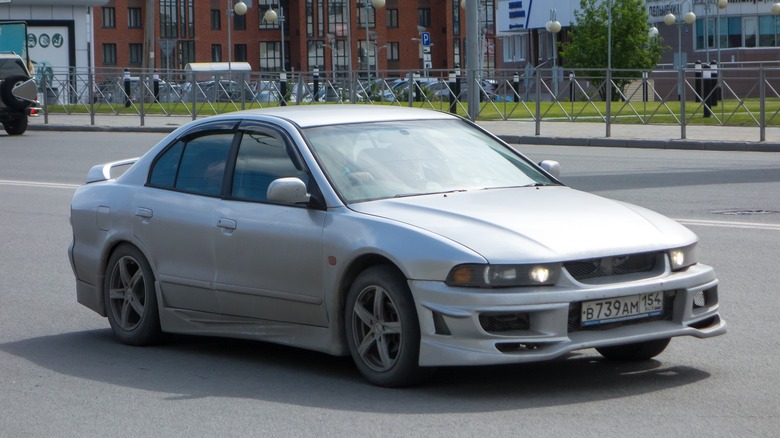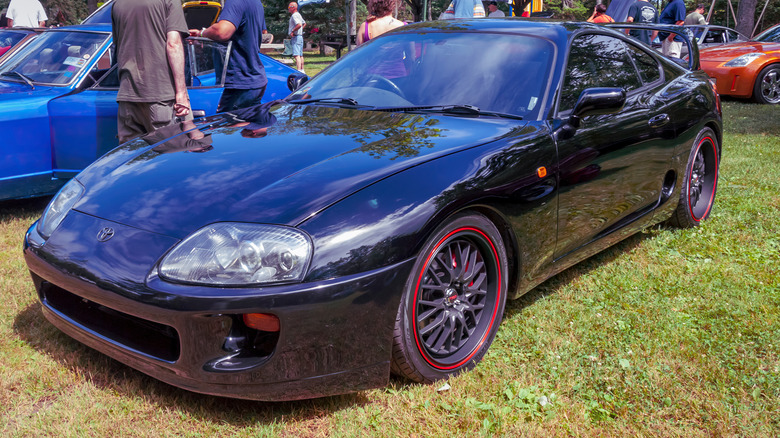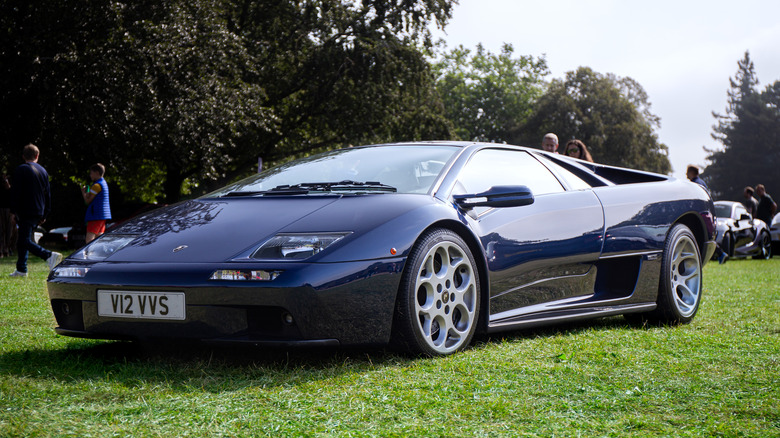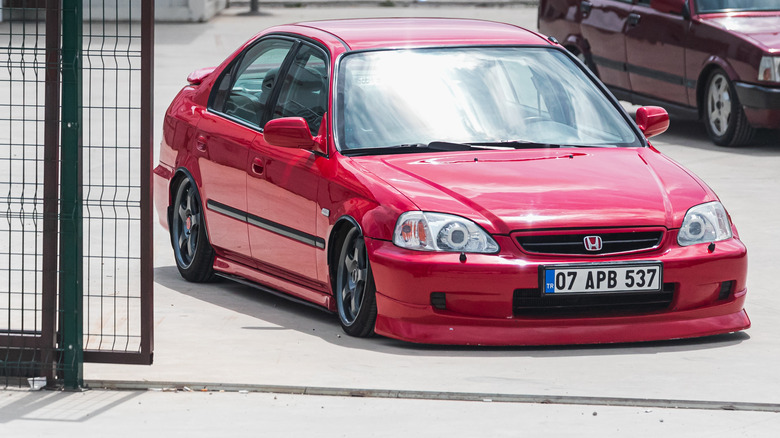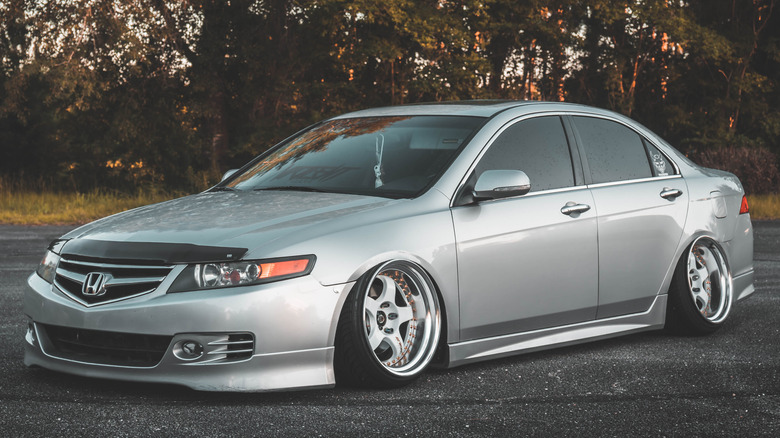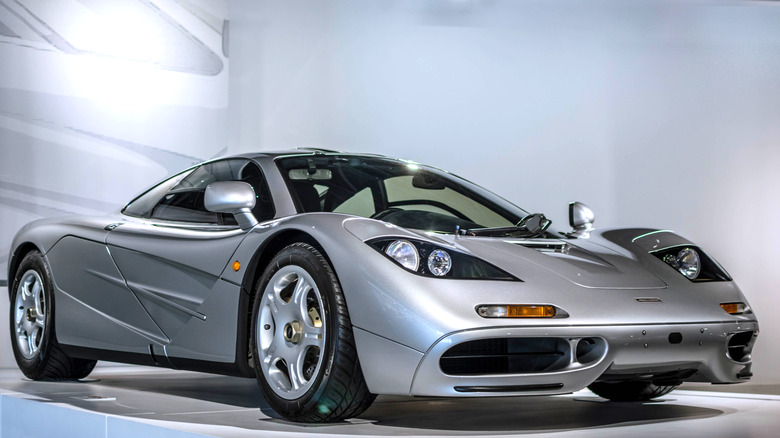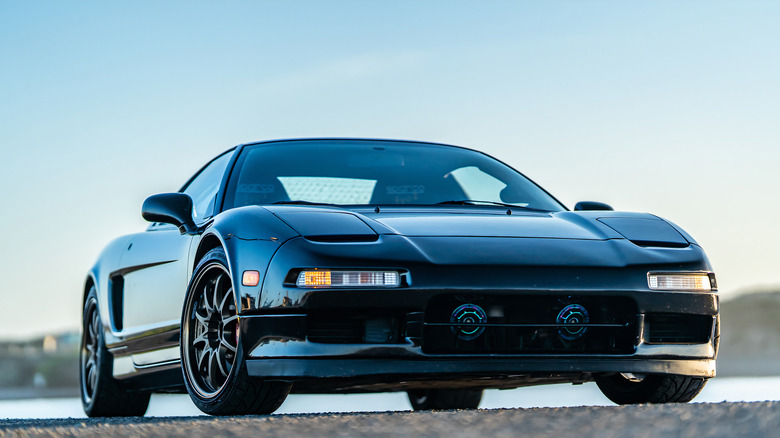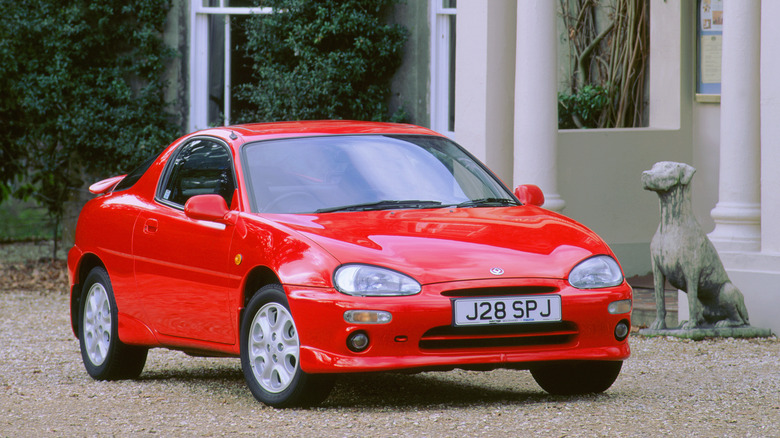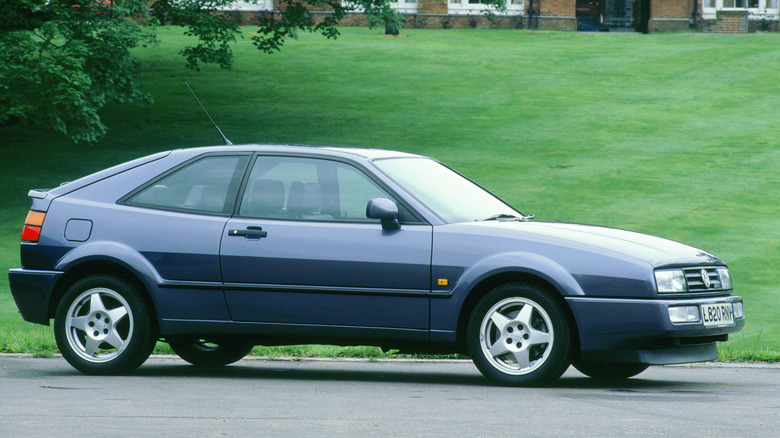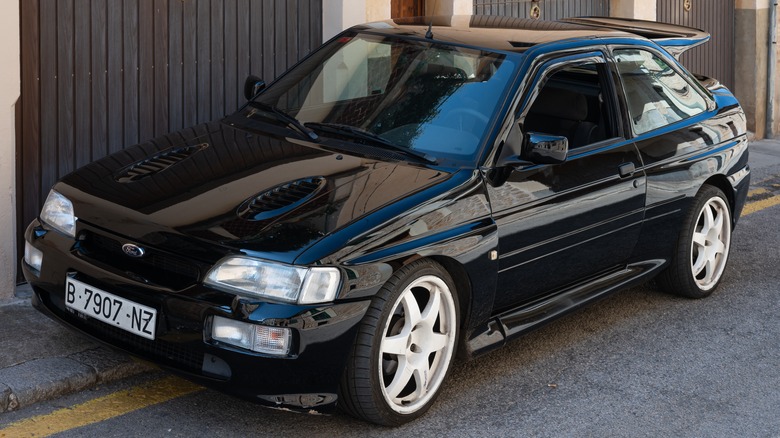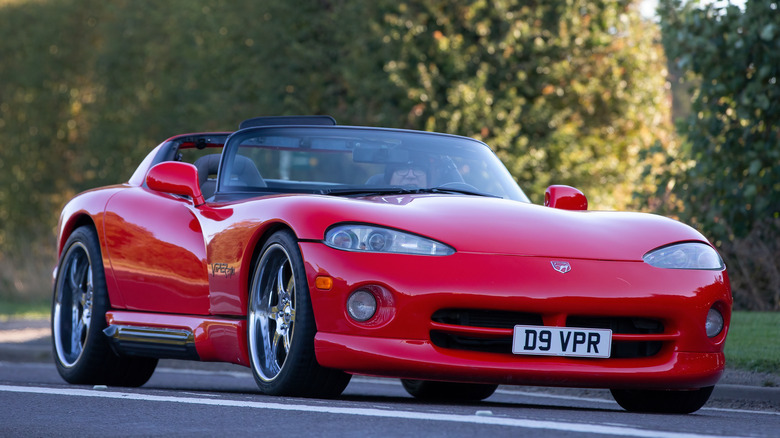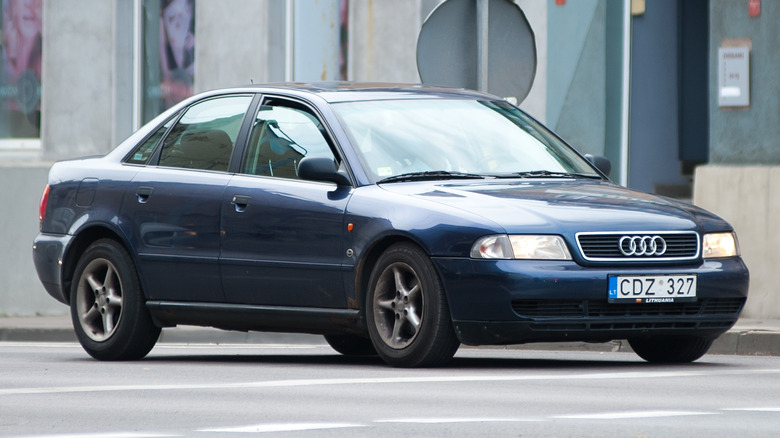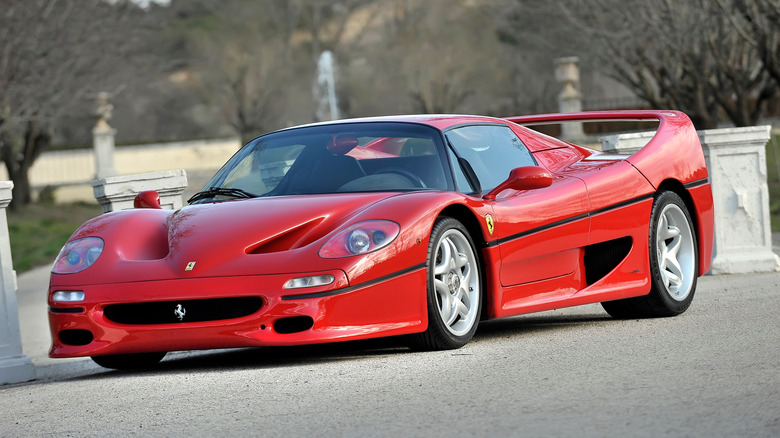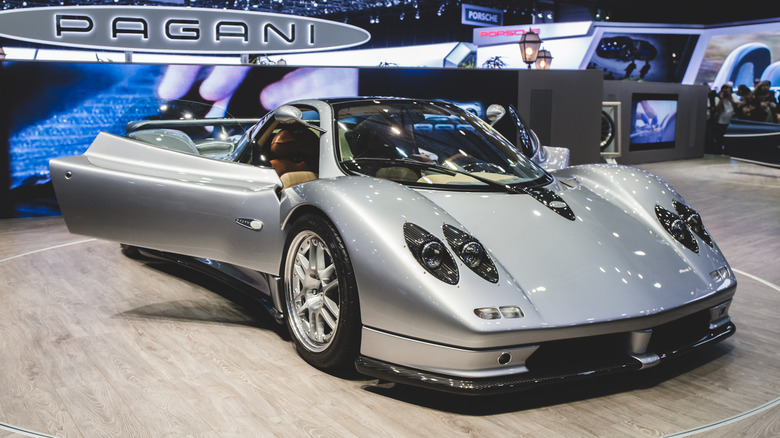20 Awesome 90s Cars That People Forget About
The '90s was a really cool era, especially when it comes to the automotive industry. While today we have some of the best-performing cars in the history of automobiles, like Chiron and Aventador, the '90s was a decade of transition — the vintage cars from the earlier decades began to get more powerful, advanced technologies like fuel injection systems and computerized engine controls were growing faster than ever, and most importantly, manufacturers were getting rid of the old boxy-like designs and switching to more sleek and stylish exteriors that gave us all a glance into the future.
While there are lots of cars that made news in the '90s for their amazing specs and features, some of them became the victim of time and have lost worthy recognition in today's high-paced world. In this article, we list some of the best cars from the iconic era that were way ahead of their time in terms of both design and performance — and celebrate the time when they used to be the auto game's real.
Nissan 300ZX
Also known as the Fairlady Z, the Nissan 300 ZX was a sports car grand tourer manufactured from 1986 to 2000. The car was produced over two-generation models in three body styles — a two-door convertible, a two-door coupe, and a four-seater Targa coupe. The X in the name was a carryforward from its predecessor models that signified the luxury and comfort-oriented features. The first-generation model of the 300ZX, called the Z31, was the most successful Nissan Z car that recorded large volumes of sales, both in the US and Japan.
The second-generation model of the 300ZX, known as the Z32, portrayed a new design in the lineup along with a considerable spec bump. The car was designed by Nissan to be even faster with more advanced technology so that it could become more competitive in the sports car segment. Sales of the car reached close to 1 million for the 1990 model year, making it one of the best-selling sports cars around the time (via Supercars).
Designed by Isao Sono and Toshio Yamashita, the Z32 equipped a 3.0L DOHC naturally aspirated engine with variable valve timing that could produce 222 bhp at 6,400 RPM along with 198 lb-ft of torque output. The turbocharged version of the engine was equipped with dual intercoolers and a parallel twin-turbo charger setup that produced 300 bhp and 283 lb-ft of torque. Acceleration from 0-60 mph took five seconds and the car could attain a top speed of 155 mph.
Lincoln Mark VIII
The Lincoln Mark VIII was a two-door luxury coupe manufactured by Lincoln from 1993 to 1998. It was produced as a single generation model and was assembled in Ford's Wixom Assembly Plant. Lincoln Mark VIII was the successor of the Mark VII and in 1998, the model was finally discontinued without any further replacement, making it the last remaining model of the Lincoln's Mark series (via Driving Line).
Development of the car began in 1984 and it was aimed to be launched in the early '90s. Designed by Kyu Kim in 1986, the car featured a revolutionary design language that was completely different from the previous Lincoln vehicles while retaining the signature elements of the brand. The first design prototype, called Sketch 1, was developed by the design team and was presented to the company's executives in 1998. The design was well-received, although some changes were ordered that involved moderate revisions at the front and rear end.
The Mark VIII was bigger than its predecessor and featured a unibody construction. The body was reinforced with a high-strength steel roof and thicker door panels. The car featured an independent air suspension system with computer controls that automatically lowered the ride height at higher speeds to enhance the aerodynamics. Mark VIII sported an all-new 4.6-liter DOHC V8 engine that produced 280 horsepower and 285 lb-ft of torque output at 5,500 rpm. The engine was further mated with a 4-speed automatic transmission system that efficiently managed the V8's power.
Mazda MX-5
Known as the Eunos Roadster in Japan, the Mazda Miata was the first generation MX-5 roadster sports car that was unveiled at the Chicago Auto Show in 1989. Considered as one of the best sports cars at the time, the Mazda MX-5 was heavily inspired by the British sports cars from the post-war era. The two-door convertible was completely made out of steel and the roof was made of lightweight aluminum. Originally, the MX-5 was offered with a standard 5-speed manual transmission system along with a 1.6-liter DOHC straight-4 engine. Together, the system could produce 115 bhp at 6,500 rpm along with 100 lb-ft of torque output. Furtherthermore, an electronic fuel injection system was on offer too with an airflow meter along with an electronic ignition system.
Another variant of the MX-5 with an automatic transmission system was available with a 1.6L engine specifically tuned for the automatic gearbox that developed the peak torque at lower rpm. Flatout, the car could reach 60 mph in 8.6 seconds and could go as high as 116 mph. In 1993, a limited edition of the Mazda MX-5 was launched with only 1,500 units on offer. This model featured a more lavish interior filled with red leather upholstery and came loaded with features such as power steering, power windows, cruise control, and rear spoilers. All 1,500 units of the Mazda MX-5 LE were made in black.
Mercury Cougar
Mercury Cougar is the name given to the diverse range of automobiles produced by Ford's Mercury division from 1967 to 2002. Throughout the course of production, the Cougar shared its platform with Ford vehicles and was introduced as a convertible, four-door sedan as well as a hatchback. Released over eight generations, the Mercury Cougar witnessed a lifespan of almost 34 years, and all the cars were effectively based on their Ford counterparts (via Motor Trend).
Interestingly, Mercury Cougar started life as a proposed design for the Ford Mustang, which was further tweaked by the Mercury division forming the Cougar version of the car. Following the successful launch of the 1964 Ford Mustang, Mercury Cougar was pushed in the market as a plush pony car intended to sit right between the Mustang and Ford Thunderbird. Cougar served as a better option in terms of comfort than the former while offering more power and performance than the latter.
During the '90s, the 7th generation of the Mercury Cougar prevailed which was first introduced in 1989. It rivaled the more expensive BMW 6 series and Jaguar XJS while remaining in the economical price segment. Based on Ford's all-new MN-12 platform, the 7th gen Cougar retained the back-wheel-drive layout with an increase in the wheelbase of the car by 13 inches, making it longer than the then Mercedes Benz 560. The car was juiced by a 3.8-liter V6 engine that produced 140 horsepower and was mated with a 4-speed automatic transmission system.
Honda S2000
Introduced as a concept car in the 1995 Tokyo Motor Show, Honda S2000 was an open-top sports car designed and developed by Japanese auto giant Honda from 1999 to 2009. To mark and celebrate the 50th anniversary of the Japanese company, Honda launched the production version of the S2000 on April 15, 1999.
The car featured a front-engine layout with rear-wheel drive and sported a 1.9L DOHC motor with Honda's VTEC technology. The engine generated a power output of 247 horsepower along with 161 lb-ft of torque output and was further paired up with a 6-speed manual transmission system and an electronically controlled rear-slip differential system. In order to achieve a 50:50 weight distribution, the engine was designed to be light in weight and was positioned right behind the front axle.
Some of the notable features of the Honda S2000 include an independent double-wishbone suspension system, a power steering wheel, and 16-inch Bridgestone Potenza S-02 tires. An electronically operated vinyl top was standard along with a plastic rear window. An optional aluminum hardtop was also on offer. The Japanese company initially offered the Honda S2000 in four different paint jobs, namely Silver Metallic, Berlina Black, New Formula Red, and Grand Prix White.
Jaguar XJ220
Produced by the British luxury automobile giant Jaguar between 1992 and 1994, the XJ220 was a two-door two-seater sports car that was produced in partnership with the then leading automobile and racing engineering company Tom Walkinshaw Racing. XJ220 was based on a V12 all-wheel-drive concept car designed and developed by Jaguar company's employees in their spare time with the intention to create the latest Jaguar Le Mans Racing car. The initial prototype of the XJ220 was unveiled at the British International Motor show to the public in 1988.
Shortly after the positive response from the public, the British motor giant put the prototype model into production and planned deliveries for 1992. Throughout the course of production which continued over two years, a total of just 275 cars were produced. Each carried a price tag of a whopping $800,000 making it one of the costliest sports cars of that time.
For the production version, the overall aluminum structure from the concept version was retained. The scissor doors were dropped down and other significant changes were done to the exterior of the car, including altering the physical dimensions. Sadly replacing the V12 engine from the concept variant, the production model sported a 3.5L twin-turbo V6 engine which produced 542 horsepower with 475 lb-ft of torque output. Flat-out, the car could reach 60 mph in just 3.6 seconds. All this power was efficiently managed by the 5-speed manual transmission and the XJ220 was offered in rear-wheel-drive.
Mitsubishi Galant VR-4
Mitsubishi Galant VR-4 was the top-of-the-line Galant variant for Mitsubishi Motors and was produced from 1988 to 2004 over three generations. The four-door car was originally developed in compliance with the Group A regulations of the World Rally Championship but was later surpassed by the company's more performance-oriented car, the Lancer Evolution.
Galant VR-4 featured a 2.0L 16 valve DOHC petrol engine with an all-wheel-drive transmission system. The trim designed specifically for roads produced a healthy power output of 195 horsepower and could reach a top speed of 130 mph. Acceleration from 0 to 60 mph took 7.3 seconds and the car could cover a quarter-mile distance in 15.3 seconds. Interestingly, the car featured a four-wheel speed-sensitive steering wheel with power assist that could turn the rear wheels in the same direction and angle as the front wheels while driving above 30 mph.
Eventually, a liftback version of the Mitsubishi Galant VR-4 was also produced with minor upgrades. Known as the ZR-4, the car featured a center differential all-wheel-drive system with a four-wheel steering system, four-wheel ABS system, and an independent suspension system. A package of all these technologies in a single car was quite a thing back in the day (via Car Throttle).
1993 Toyota Supra
One of the most famous JDM cars of all time, the Toyota Supra is one of the most appreciated sports cars around the world. First introduced in 1978 by the Japanese auto giant, the sports grand tourer has been produced over five generations but since this article is specifically about the 90s, let us go through the fourth generation model that prevailed during that time.
Designed by a team of engineers led by Isao Tsuzuki, this Supra sported a naturally aspirated Toyota 2JZ-GE engine that was rated at 220 horsepower and could produce a peak torque output of 210 lb-ft at 5,800 rpm. Furthermore, another engine known as the 2JZ-GTE was on offer too. This was a twin-turbocharged i6 engine that could produce 276 horsepower and 318 lb-ft of torque output. While all this was for the domestic Japan-only model, the export model was fitted with a smaller turbocharger setup and bigger fuel injectors which increased the power output to the next level. The international variant could produce 326 horsepower and 325 lb-ft of torque output. Fourth-generation Supra's turbo variant could accelerate from 0 to 60 mph in just 4.6 seconds and had a top speed of 160 mph.
Lamborghini Diablo
Produced between 1990 and 2001 by the Italian luxury car manufacturer Lamborghini, Diablo was a high-performance mid-engine sports car introduced in several different variations — all based on Diablo's concept version. The development of the car actually dates back to 1985 when Lamborgini's executives demanded a new flagship sports car as a replacement for the then famous Lamborghini Countach.
The first production model was introduced to the public in early 1990 as a mid-mounted rear-wheel-drive supercar. All the juice for the performance car came through a 5.7-liter V12 engine that was further integrated with a computerized multi-point fuel injection system. The mighty engine could produce 485 hp along with 428 lb-ft of torque output. Acceleration from 0-60 mph took 4.5 seconds and the top speed of the car was rated at 202 mph.
Since Diablo came as a replacement to the flagship Countach, not only did it feature better performance specs but also carried better standard features than the predecessor. The list included multi-way adjustable seats, power windows, and an adjustable steering wheel, among others. The car sported an Alpine stereo system with an optional subwoofer on offer. Throughout the course of production, only 3,000 units of Diablo ever left the production facility of Lamborghini (via Lamborghini).
Honda Civic Del Sol
Civic Del Sol was a two-seater Targa top sports car produced by the Japanese automaker Honda during the '90s (via Motor Trend). The car was based on the Honda Civic platform and was the successor of the then-popular Honda CRX. Debuted in 1992 in Japan and the UK, the Civic Del Sol was not exactly a convertible car. Instead, the car featured a removable hardtop instead of a retractable soft top that could be stored in the trunk — offering the convertible car feel. The Civic Del Sol was renounced as one of the most stylish and affordable sports cars in its time.
The car was initially offered in two variants — the base model S and the upper-level model SI. the S variant sported a 1.5L SOHC inline-4 engine that produced a healthy output of 106 bhp and wore 13-inch tires on steel wheels. The more advanced SI variant booked the 1.6-liter SOHC inline-4 engine and was equipped with the Honda's advanced VTEC technology which increased the total system output to 125 bhp. Along with 14-inch wheels, the SI variant was offered with power windows, cruise controls, and an optional rear spoiler for even better looks and enhanced aerodynamic efficiency.
While initially the Civic Del Sol was based on the Honda Civic platform, in 1995, Honda made a designated model series for the car which then became Honda Del Sol. However, nothing much about the car changed in terms of both looks and specifications.
Acura Vigor
Also known as the Honda Vigor, the Acura Vigor was a mid-sized sedan produced by Honda from 1989 to 1995. Competing with the then Lexus ES300, Acura Vigor was heavily based on Honda Accord, both in terms of looks and specs and actually seemed like an Accord when viewed from the sides.
The third-generation Acura Vigor packed the all-new 2.5L G series 5 cylinder engine completely made up of aluminum. The car produced an outstanding 176 horsepower along with 170 lb-ft of torque output delivering great performance. One of the main reasons for the amazing power output was the brilliant weight distribution of the car. To make it even better, the engine was longitudinally-mounted, despite the fact that power was sent to only the front wheels. The gearbox, which was available both as a 5-speed manual setup and a 4-speed automatic setup, was positioned just behind the engine with an indent towards the driver's side. This ensured optimum weight distribution and contributed to the car's performance.
Besides the engine specs, the inside of the Acura Vigor was quite competitive too. The car featured a self-balancing stereo system (which was quite a thing back in the '90s), and an in-dash cassette player with an exterior CD player. Automatic gate locks and power windows ensured the modernity of the car and the leather-wrapped interior sealed the deal, making the interior look elegant as well as comfortable.
McLaren F1
The McLaren F1 was a high-performance sports car that was designed by the British auto major McLaren from 1992 to 1998 in Surrey, England. Interestingly, throughout the production tenure, only 106 such units of the McLaren F1 ever left the production facility, making it quite a rare car to lay hands on today. Back in the '90s, the McLaren F1 featured tons of unique design elements on the exterior of the car that made it look much more futuristic and track-oriented. It was way lighter and streamlined shaped, more than any sports car around that time.
Unlike other performance cars, the McLaren F1 could fit three people inside the cabin including the driver. The seating layout was quite unconventional- the driver's seat was located at the center of the front row with the rest of the two passenger seats positioned at the rear end. This was said to be done for a better viewing field for the driver. Interestingly, McLaren F1 used a V12 engine sourced directly from BMW known as the S70/Z. The V12 engine produced an enormous 618 horsepower along with 479 lb-ft of torque output. The naturally aspirated engine could go from 0-60 mph in just 3.2 seconds, making it one of the quickest naturally aspirated cars of that time.
Honda NSX
More popularly known as the Acura NSX, the Honda NSX was a two-seater mid-engine coupe car produced in the 90s by Honda. The car was based on Honda's concept car called the Honda Pininfarina Experimental (HPX) that sported a 3.0-liter V6 engine. Honda was quite committed to developing a sports car with a power output exceeding the V8 engines from the Ferraris. Eventually, the Japanese company started working on the production version of the car, and the name was changed to NSX which stood for New Sportscar Experimental (via Honda).
The first-generation Acura NSX was co-designed by Honda's chief executives Shigeru Uehara and Masahito Nakano. The design of the car was inspired by the famous F-16 fighter jet and therefore, the exterior got a design that was aerodynamically efficient. Talking about the engine of the car, it was a 3.0L V6 unit completely made up of aluminum and was mated with Honda's famous Variable Timing and Electronic (VTEC) system.
The car was initially offered with a 5-speed manual transmission system until 1999 when Honda began to offer the sports shift 4-speed automatic gearbox known as F-Matic. Honda NSX was unveiled to the public in Chicago Auto Show held in 1989 and was available both as a coupe and Targa top. In 1997, the NSX lineup witnessed a performance upgrade that featured an all-new 3.2L V6 engine.
Mazda MX-3
Introduced in the German Auto Show in 1991, the Mazda MX-3 was a Japanese sports car produced from 1991 to 1998 (via Concept Carz). The car was available in Japan, Europe, Australia, and North America with two engine options- a single-cam 1.6L inline-four and a bigger 1.8L V6 motor. Talking about the car's performance, the V6 engine could produce a healthy 130 horsepower at 6,500 rpm along with 115 lb-ft of torque output. The car could accelerate from 0-60 mph in 8.5 seconds and could finish a quarter-mile in 16.8 seconds. The top speed of the car was rated at 120 mph.
The V6 engine used in Mazda MX-3 belonged to Mazda's K series and featured a system called Variable Length Intake Manifold helped to serve optimum torque distribution while the engine redlined at 7,000 rpm. In 1993, a special edition Mazda MX-3 was offered by both Mazda North America and Canada. Only 2,000 units of the special edition model were produced and each car featured a V6 engine, complete leather upholstery, heated seats, and custom-designed 15-inch alloy wheels, Concept Carz noted.
Volkswagen Corrado
The Volkswagon Corrado was a sub-compact sedan that replaced the then Volkswagen Scirocco model to become one of the best Volkswagen cars of that time. Launched at the end of 1988, the Corrado was originally a front-wheel-drive car offered with two different engine options — a 1.8L inline-four motor that could produce 134 horsepower and a supercharged 1.8L straight-four motor capable of producing 158 horsepower. The turbocharged variant was put in the market with the name G60 that signified the G-shaped turbocharger unit.
Eventually, two special models of the turbocharged G60 were produced. The first one was the G60 Jet- an economical version of the original Corrado that was limited to the German market only. This variant was available in four paint jobs along with a color-matched interior. Another variant was the 16V G60 which featured a 16-valve engine along with the original G-shaped turbocharger.
In 1992, the German giant introduced two new engine options for the Corrado lineup. The first one was a naturally aspirated 2.0L inline-4 motor that could produce 134 horsepower and was essentially a refinement of the previous 1.8L engine. Specifically for the US and Canada, a 12-valve VR6 engine was developed that could produce 187 bhp and 181 lb-ft of torque output. It was further coupled with a Bosch fuel injection system.
Ford Escort RS Cosworth
The Ford Escort was a pretty common car in the U.K. Over 4.1 million were sold during its 33-year production run, and a good number of those are still around. But not every edition was quite so common, and one of the rarest Escorts — the Ford Escort RS Cosworth — is very difficult to get a hold of. Only around 7,000 were made, and many of those ended up hurling sideways into a ditch when their drivers got a little too confident.
This particular "Cossy" was the natural follow-up to the exciting and breathtakingly popular Ford Sierra Cosworth. Like its predecessor, the Escort RS Cosworth was built for competition, though it was geared more towards rallying than stock car racing. It found success in the WRC between 1993 and 1998 — helping Ford break through in the sport, with victories at the likes of the Monte Carlo rally, Tour de Corse, and Acropolis Rally.
It shared a chassis with the Sierra, but had a number of key upgrades — including all-wheel drive as standard. It is capable of going from 0-60 in 6.1 seconds, which is still more than decent for a gas-powered hatchback by today's standards. If you keep your foot down for a while, it will cap out at 140 mph for top speed. The Ford Escort RS Cosworth was eventually replaced with the Ford Focus, both on the road and on the rally stage, but the Focus was never as cool.
The Dodge Viper
The Dodge Viper had several incarnations before ending production in 2017. The original Viper came out in the early 1990s, and it was pretty wild in comparison. It didn't stand out in the features department: In fact, it seems like the car was cobbled together with the bare minimum. There was no traction control, or anti-lock brakes, or air conditioning, or airbags, or even side windows. The 1992 edition of the Viper didn't even come with a roof — it just had a sort-of canvas tarp you could buckle on in an emergency.
What it did have was an enormous 8-liter V10 engine capable of churning out 400 horsepower — which was a tremendous amount at the time. A Ferrari 348 Serie Speciale from the same year will only produce 312 horsepower. The combination of minimalism and an enormous motor worked, as the stripped-down supercar will go from 0-60 in just 4.8 seconds. That's a very good time in 2023, and mind-blowing 30-years-ago.
The original Dodge Viper is a proper driver's car. It has no frills, and any kind of accident will not end well, but it is incredibly fast and oh-so fun to drive.
Audi S4 Plus
Audi had a strange start to the 1990s. The A4 was launched on the Audi 100 platform, which it would later share with the A6. The two wouldn't become truly distinct vehicles until 1997. The Audi S4 launched in 1991 and was, as it still is, a souped-up performance version of the A4 Sedan — coming in either a "Saloon" or "Avant" body style. However, there was an even higher power variant around for a short amount of time. The Audi S4 Plus really stood out in the engine department.
Gone was the inline-five engine the "standard" A4 and S4 were packing. Instead, the S4 Plus came with a hefty 32-valve, 4.2-liter V8 capable of belting out a respectable 276 horsepower. This all went through a six-speed manual transmission, and Audi's "Quattro" all-wheel-drive system also came as standard. The S4 Plus, although rare, proved popular — even F1 legend Ayrton Senna had one in silver.
If you want to mimic the Brazilian F1 hero, you may have a hard time. An old S4 isn't too difficult to find, but the S4 Plus is a weird, yet potent, piece of automotive history. Cool for a few years, and then gone.
Ferrari F50
A 50th birthday celebration usually involves a family gathering, a drunken night out with friends, or a long gaze into the dark void where your all too fleeting youth used to be. Not for Ferrari, though — its 50th birthday celebrations came two years early, and involved the release of an F1-inspired supercar.
It was a follow-up to 1987's Ferrari F40 — which has repeatedly been rated among the best cars the Prancing Horse has ever built. While it may not be as famous as its predecessor, it's definitely not a disappointment. It has a 4.7-liter, naturally-aspirated V12 capable of churning out 513 horsepower, and hitting 60 from a dead standstill in just 3.8 seconds. Flat out, it will do 201 miles per hour.
As it's a Ferrari, it's incredibly rare, and you're unlikely to ever get one — even if you have managed to avoid the company's infamous blacklist. Only 349 were built, and only 55 made it to the United States. It was originally priced at $475,000, but you could have probably flipped it for more than that on the day it was delivered, had Ferrari not thought ahead and implemented a leasing scheme. The leases have long since expired, and the price of the vehicle has skyrocketed. An example that had been garaged for 18 years was up for auction in 2022 with a guide price of $5-6 million.
Pagani Zonda C12-S
The Pagani Zonda C12-S just crept into this list in terms of time, originally launching back in 1999. But as far as looks, performance, and pedigree go, it more than deserves its spot. After making his name at Lamborghini, Horacio Pagani decided to strike out on his own — and the Zonda was the result of that.
The vehicle he crafted was ultra light-weight, making use of carbon fiber and aluminum. It was powered by a 760-horsepower Mercedes AMG V12, which leaves you with a phenomenal power-to-weight ratio and a vehicle that will blast from 0-60 in just 4 seconds.
The Zonda also looks familiar, yet unique at the same time. You can see touches of Lambo in there, but the leaf-like wing mirrors and other features give it a strange, almost alien, slant. They're also incredibly hard to get hold of, and you're unlikely to see one outside of a show. The Zonda was made by hand, and only 140 cars were produced between its 1999 launch and the end of the model's run in 2017.
To complicate things further, the Zonda wasn't passed for import into the United States, and was never sold stateside. If you do somehow manage to secure one, you can only own it under the "Show and Display" rule as things stand. That said, the first Zondas will soon be celebrating their 25th birthdays, which makes them legal to import, so it may not be banned in the U.S. much longer.
